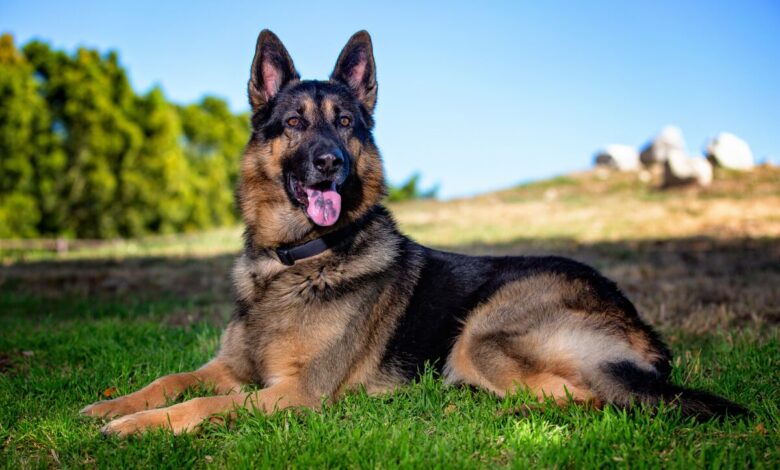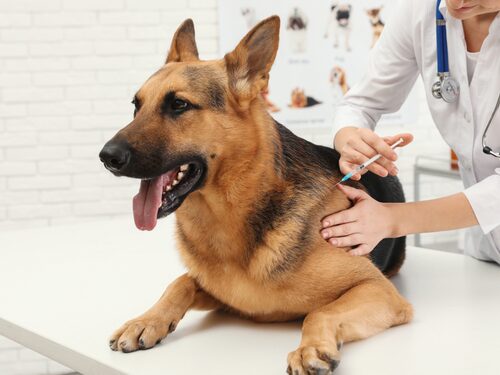HOW TO MAKE MY DOG GROW BIGGER: grow guide and healthy steps

Want a bigger dog? Explore powerful strategies and tips on how to make my dog grow bigger and healthy. Get started now!
Learn how to make my dog grow bigger with our ultimate guide. Discover effective methods and expert advice for remarkable results.
Every dog owner dreams of raising a healthy, well-developed canine companion. Yet, many pet parents find themselves wondering if their furry friend is reaching their full growth potential. how to make my dog grow bigger. Whether you have a smaller-than-average pup or simply want to ensure optimal development, understanding how to support your dog’s growth is crucial.
From nutrition and exercise to genetic factors and environmental conditions, multiple elements influence your dog’s size and development. The good news? You can take specific, proven steps to help your four-legged friend achieve their maximum growth potential while maintaining their health and well-being. Let’s explore the essential factors that contribute to healthy dog growth and learn practical strategies you can implement today.
Understanding Your Dog’s Growth Potential
Breed-specific Size Expectations
how to make my dog grow bigger. Different dog breeds have distinct genetic blueprints that determine their ultimate size. Here’s a quick reference for common breed size categories:
| Size Category | Adult Weight Range | Example Breeds |
|---|---|---|
| Small | 2-22 lbs | Chihuahua, Yorkshire Terrier |
| Medium | 23-57 lbs | Border Collie, Bulldog |
| Large | 58-99 lbs | German Shepherd, Labrador |
| Giant | 100+ lbs | Great Dane, Saint Bernard |
Genetic Factors Affecting Growth
Several genetic elements influence your dog’s growth potential:
- Parental genetics
- Breed-specific growth genes
- Gender differences
- Individual genetic variations
Growth Plate Development Stages

Growth plates are crucial areas of developing tissue at the ends of long bones that determine your dog’s final size. The key development stages include:
- Early rapid growth (2-6 months)
- Moderate growth (6-12 months)
- Final growth phase (12-18 months)
- Growth plate closure (varies by breed)
It’s essential to understand that while nutrition and exercise play important roles, genetics largely determine your dog’s maximum size potential. how to make my dog grow bigger. Large breeds typically take longer to reach their full size, sometimes up to two years, while smaller breeds usually complete their growth within 12 months.
Now that you understand your dog’s growth potential, let’s explore how proper nutrition can support healthy development.
Proper Nutrition for Maximum Growth
High-quality Protein Sources
A growing dog needs premium protein sources to develop strong muscles and achieve their full size potential. Here are the best protein sources:
- Lean chicken breast (23g protein per 100g)
- Salmon (20g protein per 100g)
- Turkey (29g protein per 100g)
- Lean beef (26g protein per 100g)
- Eggs (6g protein per egg)
Essential Vitamins and Minerals
| Nutrient | Function | Food Sources |
|---|---|---|
| Calcium | Bone development | Dairy, bone meal |
| Vitamin D | Calcium absorption | Fish oil, egg yolks |
| Zinc | Growth and immunity | Red meat, poultry |
| DHA | Brain development | Fish, fish oil |
Feeding Schedules and Portions
Puppies require more frequent meals than adult dogs:
- 2-3 months: 4 meals daily
- 3-6 months: 3 meals daily
- 6-12 months: 2 meals daily
Growth-supporting Supplements
Key supplements for optimal growth include:
- Glucosamine for joint health
- Omega-3 fatty acids for coat and brain development
- Multivitamins formulated for growing puppies
- Probiotics for digestive health
Remember to always measure portions according to your puppy’s weight and breed size. Overfeeding can lead to rapid growth that may cause joint problems. With proper nutrition established, regular exercise plays a crucial role in your dog’s development.
Exercise and Physical Development

Age-appropriate Activities
- Puppies (2-6 months)
- Short play sessions (5-10 minutes)
- Gentle fetch games
- Basic obedience training
- Young Dogs (6-12 months)
- Longer play periods (15-20 minutes)
- Interactive toys
- Structured walking routines
Muscle-building Exercises
- Safe Strength Activities
- Swimming
- Uphill walks
- Tug-of-war with proper toys
- Controlled fetch sessions
| Exercise Type | Duration | Frequency | Benefits |
|---|---|---|---|
| Swimming | 10-15 mins | 2-3x/week | Low-impact, full-body workout |
| Uphill Walking | 15-20 mins | 3-4x/week | Builds leg muscles |
| Tug-of-war | 5-10 mins | Daily | Strengthens jaw and neck |
Joint-friendly Workouts
- Low-impact Activities
- Walking on soft surfaces
- Controlled obstacle courses
- Balance exercises on cushioned mats
Regular exercise is crucial for proper muscle development, but it’s essential to avoid overexertion. how to make my dog grow bigger, Start with shorter sessions and gradually increase duration as your dog builds strength and endurance. Always monitor your dog’s energy levels and stop if they show signs of fatigue.
Table of Contents
Now let’s explore how to monitor your dog’s health during this critical growth period to ensure safe development.
Health Monitoring During Growth

Regular Vet Check-ups
How to make my dog grow bigger. Schedule veterinary visits every 2-3 months during your puppy’s first year. These check-ups are crucial for:
- Vaccination updates
- Growth pattern assessment
- Early detection of potential health issues
- Developmental milestone tracking
Growth Rate Tracking
Monitor your dog’s growth using this basic timeline:
| Age | Expected Progress |
|---|---|
| 2-4 months | Rapid growth phase |
| 4-6 months | Moderate growth |
| 6-12 months | Slower, steady growth |
| 12+ months | Final size refinement |
Warning Signs of Abnormal Development
Watch for these concerning signals:
- Limping or difficulty moving
- Uneven growth between limbs
- Excessive lethargy
- Poor appetite or weight gain
- Visible skeletal abnormalities
Weight Management Tips
- Measure food portions accurately
- Adjust calories based on activity level
- Avoid overfeeding to prevent joint stress
- Monitor body condition score monthly
Joint Health Maintenance
Protect your growing dog’s joints by:
- Limiting high-impact activities
- Providing appropriate exercise
- Using joint supplements if recommended
- Maintaining ideal weight
how to make my dog grow bigger. With proper health monitoring established, let’s explore how environmental factors can further influence your dog’s growth potential.
Environmental Factors
Proper Rest and Sleep
Dogs need 12-14 hours of quality sleep daily for optimal growth and development. Create a dedicated sleeping area with these essential elements:
- A supportive orthopedic bed sized for adult weight
- Quiet location away from household traffic
- Consistent temperature zone
- Dark or dimly lit space
Stress-free Living Space
A calm environment promotes healthy growth hormones and proper development:
| Stress Factor | Solution |
|---|---|
| Loud noises | Sound-proof area or white noise machine |
| Too much activity | Create quiet zones |
| Limited space | Designate play and rest areas |
| Multiple pets | Separate feeding and sleeping spaces |
Temperature and Comfort Considerations
Maintain optimal temperature ranges for healthy development:
- Keep indoor temperature between 68-78°F (20-26°C)
- Provide cool areas during hot weather
- Ensure proper ventilation
- Use appropriate bedding for seasonal changes
- Monitor humidity levels (30-70% ideal range)
Creating the right environment significantly impacts your dog’s growth potential. Proper rest in a stress-free space with comfortable temperature control allows your puppy’s body to focus energy on growth and development. These environmental factors work alongside proper nutrition and exercise to support healthy development.
Now that you understand the importance of environmental factors, let’s look at how regular health monitoring can ensure your dog stays on track with their growth goals.
CONCLUTION
Growing a healthy, well-developed dog requires a balanced approach that combines proper nutrition, regular exercise, and attentive care. While genetics play a significant role in determining your dog’s ultimate size, providing optimal conditions during their growth phase can help them reach their full potential.
Remember that each breed has its own growth characteristics and timelines. Focus on maintaining a consistent care routine with high-quality food, appropriate exercise, regular vet check-ups, and a stress-free environment. Your dedication to these fundamental aspects will help ensure your dog develops into a strong, healthy adult at their natural ideal size. how to make my dog grow bigger .
Providing your canine companion with high-quality, nutritious food is essential for their overall health and well-being. A balanced diet that meets the specific nutritional needs of your dog’s breed, age, and activity level is crucial for their growth, development, and energy levels.
Offering a variety of wholesome, natural ingredients can help support a strong immune system, healthy skin and coat, and optimal organ function. In addition to a proper diet, adequate training is necessary for your dog to grow into a well-behaved, confident, and socialized companion.
Establishing a consistent training regimen, using positive reinforcement techniques, and exposing your dog to new environments and experiences can help them develop essential skills and behaviors. This not only enhances the bond between you and your furry friend but also ensures their safety and the safety of others.
Understanding the unique characteristics and needs of your dog’s breed is important for tailoring their care and training to their specific requirements.
how to make my dog grow bigger, Researching the breed’s temperament, physical attributes, and typical behaviors can help you provide the appropriate environment, activities, and socialization opportunities to help your dog thrive. By meeting their breed-specific needs, you can help your dog grow into a happy, healthy, and well-adjusted member of your family.





